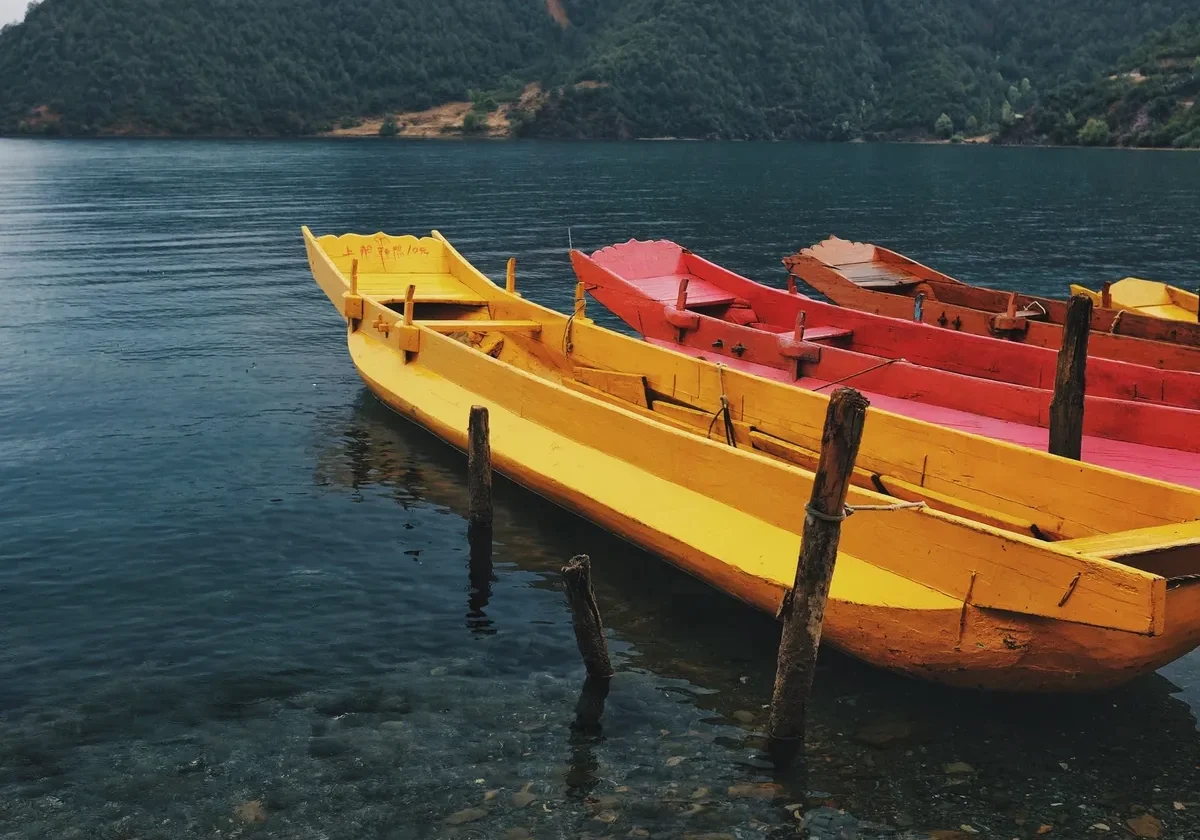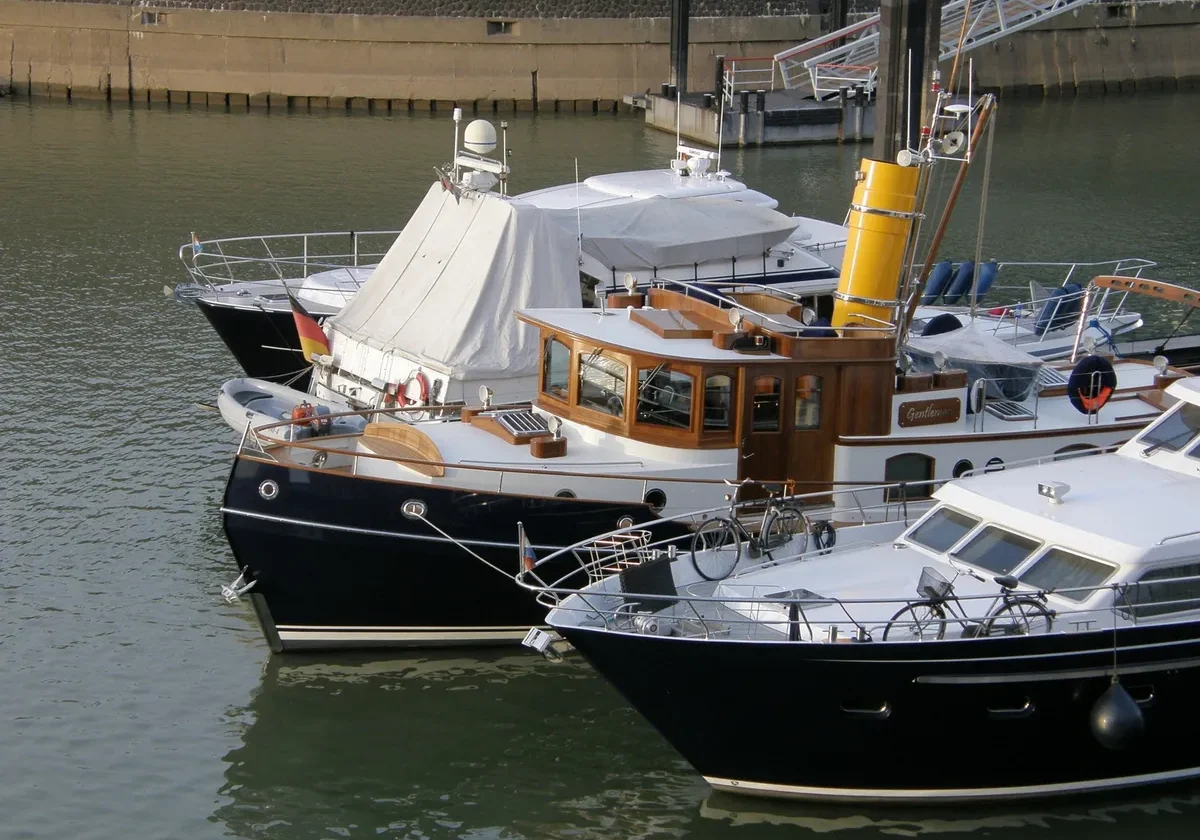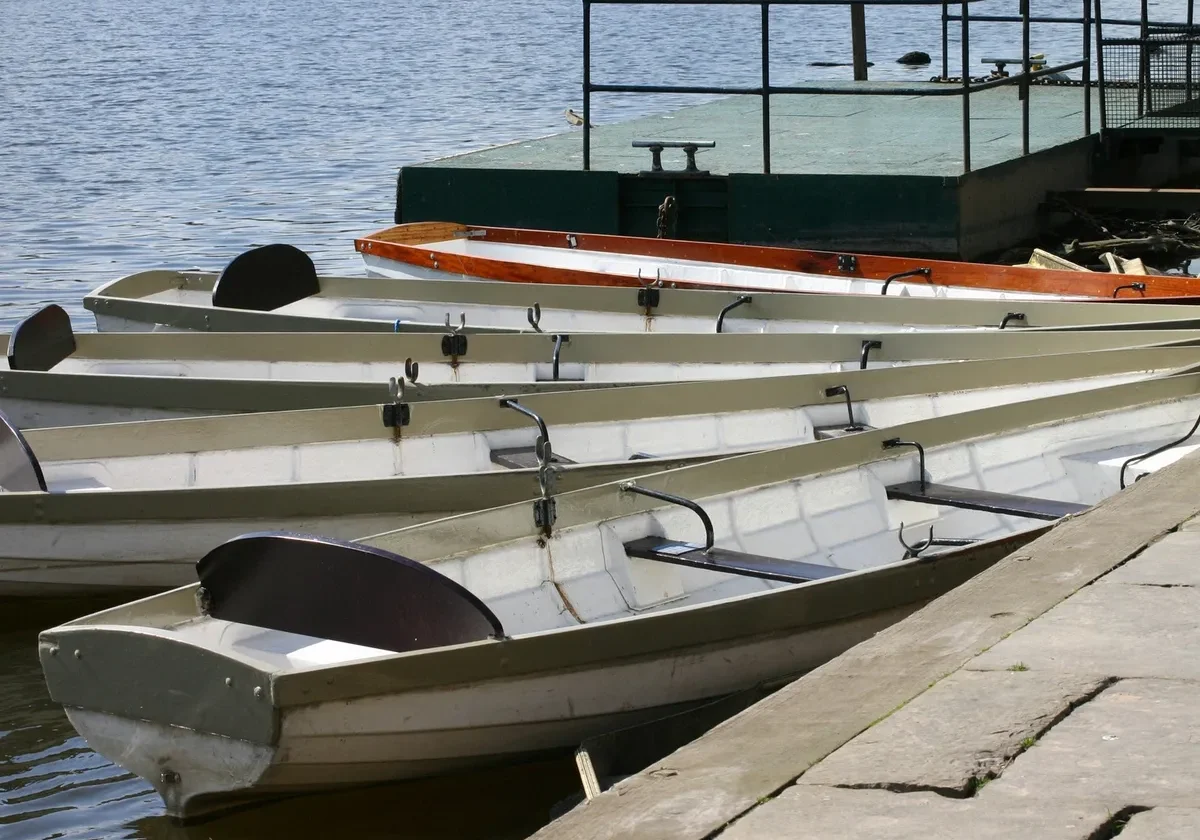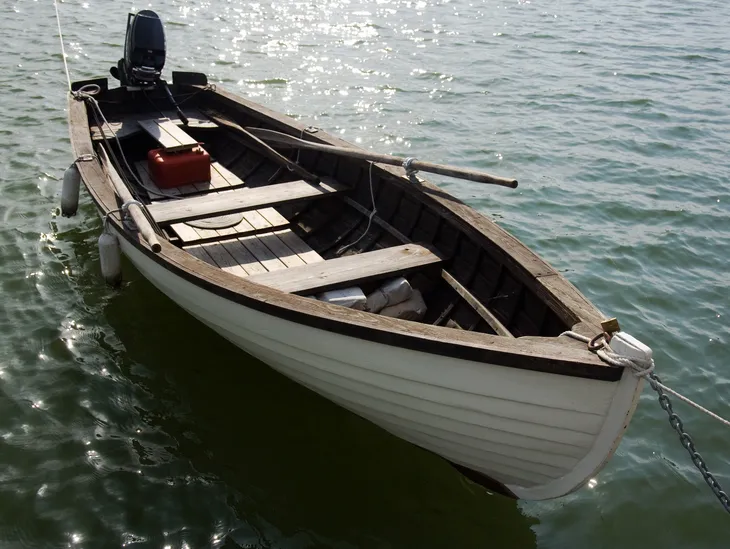RNLI Lifeboats

All-weather lifeboats
All-weather lifeboats (ALBs) are capable of high speed and can be operated safely in all weather conditions. They are inherently self-righting after a capsize and fitted with navigation, location and communication equipment. Big and bright, the sight of one of our all-weather lifeboats on the horizon has given hope to many.
The all-weather fleet currently consists of the Shannon, Severn, Trent, Tamar and Mersey class lifeboats.
Inshore lifeboats
Inshore lifeboats (ILBs) usually operate closer to shore, in shallower water, near cliffs, rocks and even in caves. They are designed to be quick and manoeuvrable, allowing our crews to get as close as possible to those in trouble.
The inshore lifeboat fleet consists of the B and D class lifeboats, as well as the E class lifeboats on the River Thames.


Hovercraft
We also have inshore rescue hovercraft for areas that are inaccessible to conventional RNLI lifeboats such as mud flats and river estuaries. The hovercraft allows us to fly across dangerous terrain, enabling our lifesavers to quickly get to those who need us most.
Hovercraft are on station at Hoylake, Hunstanton, Morecambe, and Southend lifeboat stations.
Types of Boats and Names

Shannon class lifeboat
The Shannon is the latest class of all-weather lifeboat to join the RNLI fleet. She’s the first modern all-weather lifeboat to be propelled by waterjets instead of traditional propellers, making her our most agile and manoeuvrable all-weather lifeboat yet.

Tamar class lifeboat
When our Tamar class lifeboat was introduced into the RNLI fleet in 2005, she was our most sophisticated and safest lifeboat of the time.

Severn class lifeboat
Our Severn class lifeboat is the largest lifeboat in the RNLI fleet. She was developed in the early 1990s and introduced into the fleet in 1996.

Trent class lifeboat
The Trent class was our first all-weather lifeboat capable of 25 knots and a range of 250 nautical miles, setting the precedent for the RNLI fleet.

Mersey class lifeboat
The Mersey class all-weather lifeboat was our first fast carriage-launched lifeboat.

D class lifeboat
Our D class inshore lifeboat has been the workhorse of the RNLI for over 50 years.
She is highly manoeuvrable and usually operates closer to shore than our all-weather lifeboats. She comes into her own for searches and rescues in the surf, shallow water and confined locations - often close to cliffs, among rocks and even inside caves.

B class Atlantic lifeboat
Our B class inshore lifeboat is one of the fastest in the RNLI fleet.
The current generation of B class lifeboat is called the Atlantic 85 – named after Atlantic College in Wales where these rigid inflatable lifeboats (RIBs) were first developed. 85 represents its length – nearly 8.5m.

E class lifeboat
Our E class inshore lifeboat is the fastest in the RNLI fleet and was specially designed for London’s busy River Thames.
With its powerful tidal currents, submerged debris and heavy traffic, the River Thames can be incredibly dangerous for those on and by the water and the E class lifeboat was designed to handle these river conditions.

Rescue hovercraft
RNLI inshore rescue hovercraft can reach areas inaccessible to conventional lifeboats, extending our lifesaving capability around the coast.
Typically, the hovercraft operates on large areas of tidal mudflats or sand where the surface is too soft to support land vehicles and where the water is too shallow for boats.

Inshore rescue boat
Inshore rescue boats (IRBs) are primarily used by RNLI lifeguards so that they can reach casualties in the surf, fast.
This small inflatable boat tends to be operated by two people: one focused on controlling the craft, the other focused on finding and aiding casualties.
A few lifeboat stations also use an inshore rescue boat.
Boats the Police use in the UK
Police boats come in many different types depending on their intended use. The types of police boats that may be used include:
Patrol boats
These are general-purpose boats that are used by police forces around the world for a variety of different purposes. Police forces commonly use these boats to patrol nearby areas such as rivers and lakes.
Interceptor boats
These are fast boats that are designed to intercept other boats. These boats are used to pursue criminals or intercept vessels.
Rescue boats
These are boats that have been specially designed for rescuing people in the water. They may be on a smaller scale so they can navigate through shallow water or reach victims in shallower and narrower water bodies. These are the rubber type of boats which you often see when the Police are searching through lakes.
Specialised boats
Some police forces have boats that are designed for specific purposes. For example, a police force with a boat designed to look for underwater objects may use it to search for weapons and drugs thrown overboard by criminal boats.
The Marine Policing unit uses Police Boats in their day-to-day job.
They are generally responsible for the policing of the Waterborne area. They spend their day responding to emergencies, patrolling the are and enforcing the law.
The role of a police boat can vary depending on the circumstances. The most common use of a police boat is to patrol an area.
Police boats are often used to patrol lakes, rivers, and other bodies of water that are close to the coast or with a city, such as The Thames River. Police boats can be used to check fishing licenses, look for drug or weapon smugglers or help in a nearby emergency such as a water accident.
Police boats are also used to pursue criminal boats.
Police boats can be used for intercepting boats suspected of smuggling drugs, weapons, or other illegal substances.
Police boats are also used to search for criminals who have escaped by water, which Police cars cannot reach.
Fire Boats
They can also be used for rescuing vessels that have got into trouble, towing distressed vessels, and rescuing people and animals from both water and the riverside.
They have been built with a flat bottom and a reinforced keel, so we can ‘beach’ the boats on the riverbank and lower our front access ramp without harm.
Fire boat statistics

Types of Vessels and Fleet
Hydrocat
River Runner
Hunt
Other
Sky Clipper
Sky Clipper, and her sisters Storm and Star, were the first vessels to join our fleet. The three vessels were originally built by FBM in 1992 for a high-speed passenger ferry service that would aid the redevelopment of London's docklands.
Model FBM Hydrocat
Colour Aqua
Passenger capacity 62
Wheelchair capacity 2 (+1 mobility scooter)
Top speed 22 knots
Joined us 1999
Star Clipper
Star Clipper was the final Hydrocat to join our fleet. Whilst our three 'little Clippers' are both reliable and versatile, they are only deployed on our timetabled services when no other boats are available, due to their limited passenger capacity.
Model FBM Hydrocat
Colour Lemon
Passenger capacity 62
Wheelchair capacity 2 (+1 mobility scooter)
Top speed 22 knots
Joined us 1999
Storm Clipper
Sailing from Greenland (Surrey Quays) Pier to Savoy Pier, and captained by our CEO and Co-founder Sean Collins, Storm Clipper launched our service on 24 May 1999.
To mark our 20th anniversary, Sean captained Storm for a special charter mirroring the original route on 24 May 2019.
Model FBM Hydrocat
Colour Wine red
Passenger capacity 62
Show More
Sun Clipper
Like her sister Moon, Sun Clipper was built in 2001 to serve Belfast where she was known as 'Antrim Runner'. Like Hurricane, Sun and Moon Clippers were built by NQEA Australia. Unlike Hurricane, whose wheel box is at the stern end of the vessel's cabin, Sun and Moon are captained from the bow of the vessel.
Tornado Clipper
Tornado Clipper was the fourth River Runner 200 Mk IIB to be built for us by Brisbane Ship Construction in Australia.
Model River Runner 200 Mk IIB 'Typhoon Class'
Colour Mint
Passenger capacity 220
Wheelchair capacity 4 (+1 mobility scooter)
Top speed 29 knots
Joined us 2007
Twinstar Clipper
Few vessels are as endearing as Twinstar, she’s been helping people cross the Thames for over 40 years!
Originally Twinstar carried staff between Ford’s Dagenham plant and Belvedere; now she carries hotel guests, visitors and commuters between Canary Wharf and Rotherhithe. Twinstar only operates our RB4 route.
Typhoon Clipper
Typhoon Clipper was the first River Runner 200 Mk IIB to join our fleet, as a result, our six River Runner 200 Mk IIB vessels are often referred to as "Typhoon Class". She was built by Brisbane Ship Construction in Australia.
Model River Runner 200 Mk IIB 'Typhoon Class'
Colour Purple #
Passenger capacity 220
Wheelchair capacity 4 (+1 mobility scooter)
Top speed 29 knots
Joined us 2007
Venus Clipper
Venus Clipper, the flagship of our fleet, was built by Wight Shipyard. Venus can carry the most passengers, has an extended back-deck and features more compartment-style seating than any of our other vessels.
Emerald was selected as Venus's colour as she is our greenest vessel to date and arrived just in time for our 20th anniversary, which emerald is traditionally the gemstone for.
New - Earth Clipper
Earth Clipper, the UK’s first hybrid high speed passenger ferry, joined our fleet at the end of summer of 2023. Leading the way in passenger boat design, Earth Clipper has taken strides in improving the sustainability credentials of our business as well as propelling the wider marine sector towards a greener future.
Aurora Clipper
Aurora Clipper was the last River Runner 200 Mk IIB vessel to join our fleet. Like her five sisters, Aurora was built by Brisbane Ship Construction in Australia. The additional six vessels doubled the size of our existing fleet allowing us to operate a more frequent and higher capacity service.
Comet Clipper
Comet Clipper isn't like other Clippers, she carries parcels instead of people. A partnership between Thames Clippers Logistics and DHL, parcels are loaded onto Comet at Wandsworth Riverside Quarter Pier and unloaded onto bicycles at Bankside Pier, helping keep larger transit vehicles off central London streets.
Cyclone Clipper
Cyclone Clipper is a Typhoon Class vessel built by Brisbane Ship Construction in Australia for our River Bus service.
Model River Runner 200 Mk IIB 'Typhoon Class'
Colour Orange
Passenger capacity 220
Wheelchair capacity 4 (+1 mobility scooter)
Top speed 29 knots
Joined us 2007
Galaxy Clipper
Galaxy Clipper, and her sister Neptune Clipper, were our first Hunt Class vessels. Built by Incat of Hobart, Australia, the two River Buses were loaded onto a cargo ship for the 10,000-mile journey to the UK. When they arrived, Tower Bridge was raised so that Galaxy and Neptune could be welcomed onto the Thames in central London.
Hurricane Clipper
Our former flagship, Hurricane Clipper was the first vessel to be built for us and has had a distinguished career at Uber Boat by Thames Clippers. Notably, Hurricane was covered in dots by Damien Hirst to promote our RB2 Tate-to-Tate service.
In 2019, Hurricane was fitted with a greener Selective Catalytic Reduction (SCR) engine, as a result, her NOx and SOx emissions have been reduced by up to 70%.
Hurricane is easy to spot as her wheel box (where the captain steers her from) is at the very back of the vessel's cabin.
Jupiter Clipper
Jupiter Clipper, and her sister Mercury, were built by Wight Shipyard on the Isle of Wight. Like Hunt Mk I, these vessels were designed to be lightweight and low-lying. Hunt Mk II feature a redesigned back-deck and different seating arrangements enabling them to carry an additional 20 passengers.
Mercury Clipper
Mercury Clipper, and her sister Jupiter, were built by Wight Shipyard on the Isle of Wight and sailed into London, Mercury arrived first. The Hunt Mk II vessels are 2.5 - 3 tonnes lighter than Hunt Mk I enabling greater fuel efficiency.
Model Hunt Class Mk II
Colour Silver
Passenger capacity 172
Wheelchair capacity 2 (+1 mobility scooter)
Top speed 30 knots
Joined us 2017
Meteor Clipper
Meteor Clipper was the fifth River Runner 200 Mk IIB to join our fleet. Aurora Clipper joined us soon after Meteor completing our order of six vessels from Brisbane Ship Construction in Australia.
Model River Runner 200 Mk IIB 'Typhoon class'
Colour Spiced red
Passenger capacity 220
Wheelchair capacity 4 (+1 mobility scooter)
Top speed 29 knots
Joined us 2008
Monsoon Clipper
Monsoon Clipper, built by Brisbane Ship Construction in Australia, brightens the Thames with a flash of hot pink!
Model River Runner 200 Mk IIB 'Typhoon Class'
Colour Pink
Passenger capacity 220
Wheelchair capacity 4 (+1 mobility scooter
Top speed 29 knots
Joined us 2007
Moon Clipper
Moon Clipper, and her sister Sun Clipper, were built in 2001, originally to serve Belfast where she was known as 'Down Runner'. Moon's wheel box was lowered in 2012 so that she could navigate the West River Zone's low-lying bridges more easily.
Model River Runner 150 Mk II
Colour Violet
Passenger capacity 138
Wheelchair capacity 4 (+1 mobility scooter)
Top speed 25 knots
Joined us 2005
Neptune Clipper
Neptune and Galaxy Clippers were our first Hunt Class vessels, built by Incat, Tasmania. The two Hunt Mk Is were the first new vessels to join our fleet since Aurora Clipper's arrival seven years prior and were designed to cater for the increased demand on our RB6 route.
Model Hunt Class Mk I
Show More
Orion Clipper
Named after the Orion constellation, Orion Clipper is no stranger to the stars. Our Executive Launch does not operate any River Bus routes, instead, she is available for private charters providing the most luxurious way to travel across London.
Model Executive Launch
Colour White
Passenger capacity 12
Top speed 26 knots
Joined us 2016
Sky Clipper
Sky Clipper, and her sisters Storm and Star, were the first vessels to join our fleet. The three vessels were originally built by FBM in 1992 for a high-speed passenger ferry service that would aid the redevelopment of London's docklands.
Model FBM Hydrocat
Colour Aqua
Passenger capacity 62
Wheelchair capacity 2 (+1 mobility scooter)
Top speed 22 knots
Joined us 1999
Star Clipper
Star Clipper was the final Hydrocat to join our fleet. Whilst our three 'little Clippers' are both reliable and versatile, they are only deployed on our timetabled services when no other boats are available, due to their limited passenger capacity.
Model FBM Hydrocat
Colour Lemon
Passenger capacity 62
Wheelchair capacity 2 (+1 mobility scooter)
Top speed 22 knots
Joined us 1999
Storm Clipper
Sailing from Greenland (Surrey Quays) Pier to Savoy Pier, and captained by our CEO and Co-founder Sean Collins, Storm Clipper launched our service on 24 May 1999.
To mark our 20th anniversary, Sean captained Storm for a special charter mirroring the original route on 24 May 2019.

